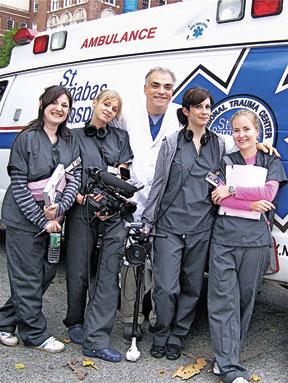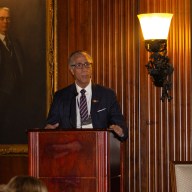A crew spent three months in the St. Barnabas Hospital and produced 911: The Bronx, a film that starkly depicts a Bronx emergency room.
The film will run in six episodes during the next few weeks and feature the staff of the Tremont hospital in their element, as well as advanced computer-generated imaging technologies to complement and augment the dramatic footage of real patients.
“They were completely integrated into the trauma team and were able to get incredibly accurate footage,” said Dr. Eric C. Appelbaum, associate director of the emergency department at the hospital, of the production team.
The doctor explains that the film crew shot over 500 hours of footage and really got to know the personalities of the staff.
“They really got to know the people, and then the awkwardness was gone,” Appelbaum recalled.
The Bronx born physician who spent summers with his grandparents on Pelham Parkway and in Castle Hill, explained how the documentary captured the unique character of the small Bronx emergency room, which serves both as a Level 1 trauma center and a community ER.
“The difference is that we function as community doctors here in the Bronx,” Appelbaum commented. “I’ve worked in other ERs, and it isn’t the same feeling of community.”
Doctors commented that the intimacy established between the medical staff and filming crew allowed for candid moments
The documentary was like a reality program for the doctors, who will be able to watch their own off the cuff remarks.
“I watched the first episode, and I said, I can’t believe I said that,” Appelbaum said. “I was just being myself.”
As all the doctors had, Appelbaum had some particularly memorable moments during filming that he’ll never forget.
“There was one case that I was involved in where our patient died on camera and we shocked him back to life, and I think I said, ‘I hope to God you’re filming this.’”
The Bronx doctor described the British team that filmed the documentary, as very interested in American medicine and the community in the Bronx surrounding the hospital.
“They were amazed by the Bronx in general; it’s a different kind of place than what they know,” Appelbaum said. “Those of us who work and live here know what its like, with all walks of life coexisting pretty well.”
Appelbaum thought some of the best cinematic moments came from the lesser medical procedures.
“A guy was like 45 and playing with kids in the neighborhood and scraped his knee falling from a skateboard, and it was a great conversation,” Appelbaum related.
Nancy C. Riedl, vice president of development at St. Barnabas, was excited that the documentary would spread word of mouth about the benefits of being treated at the Bronx facility.
“For me, working in an administrative role, this is a side of the hospital I don’t see,” Riedl said of her first viewing of the documentary. As a viewer at home, it’s amazing to see the work they do every day.
“It’s mind-blowing to watch the commitment the staff has to the individual patient and their family to make sure they understand what’s going on,” Riedl added, “ and, bottom line, saving lives.”























